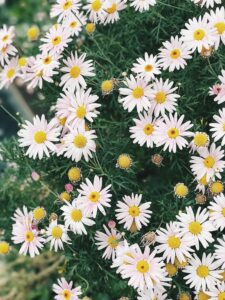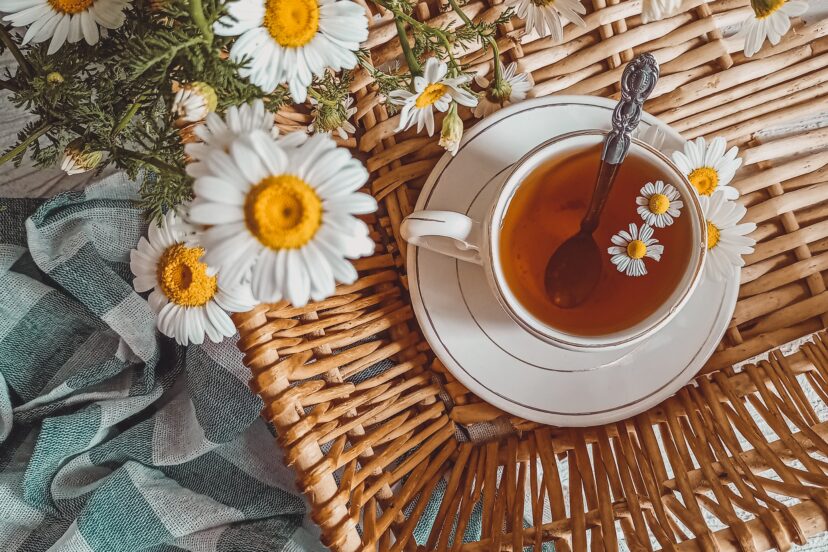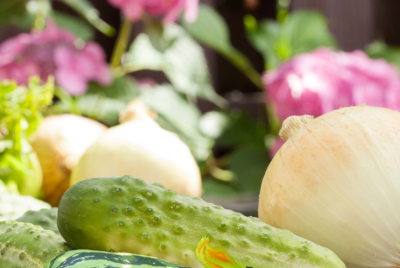Chamomile Companion Plant
Chamomile Companion Plant – Tips For Creating A Relaxing And Fragrant Garden Space
With its soothing aroma and various health benefits, chamomile is a beloved herb in the world of gardening and wellness. In terms of companion planting, chamomile can be a valuable addition to your garden for a multitude of reasons. Not only does it attract beneficial insects and repel pests, but it also helps enhance the growth and flavor of other plants. By incorporating chamomile into your garden, you can create a relaxing and fragrant outdoor space that is both aesthetically pleasing and functional. In this blog post, we will explore the art of companion planting chamomile and provide you with tips to elevate your gardening game.

Key Takeaways:
- Companion planting: Chamomile is a great companion plant as it attracts beneficial insects, repels pests, and enriches the soil.
- Relaxing garden space: Chamomile’s fragrance can create a calming and relaxing garden space, perfect for unwinding and reducing stress.
- Easy to grow: Chamomile is easy to grow and maintain, making it a great addition to any garden, whether you are a beginner or experienced gardener.
- Health benefits: Chamomile has many health benefits, such as aiding in digestion, promoting sleep, and reducing inflammation, making it a useful and versatile plant to have in your garden.
- Harvesting and preserving: Learn how to properly harvest and preserve chamomile flowers to enjoy their fragrance and benefits all year round.
Benefits of Companion Planting with Chamomile
How Chamomile Benefits Other Plants
Any garden can benefit from the presence of chamomile as a companion plant. Chamomile not only adds a beautiful and fragrant element to your garden but also serves as a natural pesticide. It attracts beneficial insects such as ladybugs and hoverflies, which prey on garden pests like aphids, making it a great companion plant for vegetables and herbs.
Creating a Healthy Ecosystem
One of the key benefits of companion planting chamomile is its role in creating a healthy ecosystem in your garden. Chamomile’s strong scent helps to repel pests while attracting pollinators like bees. By planting chamomile alongside your other plants, you are creating a more balanced environment where the plants can thrive naturally.
This positive interaction helps to reduce the need for chemical pesticides, promoting a more sustainable and eco-friendly approach to gardening. Additionally, chamomile’s antibacterial properties can benefit neighboring plants by preventing diseases and improving overall plant health.

Designing Your Chamomile Companion Plant Garden
Choosing the Right Companions for Chamomile
Some plants are great companions for chamomile in the garden. Mint can help repel pests that bother chamomile, while lavender adds a beautiful contrast in color and fragrance. Marigolds are also great companions, as they attract beneficial insects that will keep your chamomile healthy.
Layout Tips for a Relaxing Garden Space
To create a relaxing garden space with chamomile, consider planting in a sunny location with well-draining soil. Planting chamomile in clusters can create a beautiful and fragrant display. Interplanting with chamomile with other fragrant herbs like rosemary and thyme can enhance the sensory experience.
- Sunny location with well-draining soil
- Plant chamomile in clusters for visual impact
- Interplant with rosemary and thyme for added fragrance
Companion Layout Tips for a Relaxing Garden Space
Right positioning of your chamomile companions can make all the difference in your garden’s success. Placing taller plants in the back and shorter plants in the front can create a visually appealing garden bed. Remember to leave enough space between plants to allow for proper air circulation and growth.
- Proper plant positioning for visual appeal
- Leave space for air circulation and growth
Care and Maintenance for Chamomile Companions
Watering and Feeding Your Companion Plants
Despite chamomile being a hardy plant, its companions benefit from regular watering and feeding to thrive. For your chamomile companions, make sure to water them deeply but infrequently to encourage strong root growth. Additionally, fertilize them with a balanced organic fertilizer to promote healthy foliage and blooms.
Managing Pests and Diseases Naturally
Companions in your garden can help deter pests and diseases naturally, creating a harmonious environment for your chamomile plants. Marigolds are known to repel nematodes, while lavender can keep moths at bay. Consider planting basil near your chamomile to ward off aphids and mosquitoes. These natural companions not only add beauty but also act as protectors for your garden.
Plus, incorporating diverse plant species helps to create a balanced ecosystem that reduces the risk of pest infestations. By planting a variety of flowering herbs and aromatic plants alongside your chamomile, you not only enhance the beauty of your garden but also increase biodiversity, which can naturally control pest populations.

Enjoying Your Chamomile Garden
Harvesting Chamomile and Friends
For a bountiful harvest of chamomile and its companion plants, gather the flowers when they are in full bloom. Harvesting in the morning after the dew has dried can help preserve the crucial oils that give chamomile its relaxing fragrance. You can harvest chamomile by gently plucking the flowers from the stems and drying them in a cool, dark place.
Relaxation and Recreation in Your Fragrant Oasis
Chamomile gardens offer a serene space for relaxation and rejuvenation. Spending time surrounded by the fragrant blooms can help reduce stress and promote a sense of calm. Infuse your garden with elements like cozy seating areas, wind chimes, and soft lighting to create a tranquil retreat. Let the fragrant aroma of chamomile fill your senses as you unwind and enjoy the beauty of nature.
Final Thoughts on Camomile companion planting
Reflecting on the Joys of Chamomile Companion Planting
For those who have embraced the practice of companion planting chamomile, the rewards are plentiful. The sight of delicate chamomile flowers swaying in the breeze, the sweet fragrance that fills the air, and the gentle hum of bees buzzing around are just some of the joys that this herb can bring to your garden space. Chamomile not only adds beauty and fragrance to your garden but also attracts beneficial insects that promote a healthy ecosystem.
Continuing Your Gardening Journey
Your journey with chamomile companion planting doesn’t have to end here. There are so many other herbs, flowers, and vegetables that can complement chamomile and enhance your garden space. Experiment with different combinations to create a harmonious and thriving garden.
Companion planting chamomile opens up a world of possibilities for creating a relaxing and fragrant garden space. By exploring different plant combinations, you can not only enhance the beauty of your garden but also promote a healthier and more diverse ecosystem. So go ahead, plant some chamomile, and watch your garden flourish!

FAQ’s about Camomile Companion Plant
Q: What is companion planting?
A: Companion planting is the practice of planting different plants together to enhance growth, repel pests, and provide other benefits to each other.
Q: Why should I consider companion planting chamomile in my garden?
A: Chamomile is not only a beautiful and fragrant herb, but it also attracts beneficial insects, improves soil quality, and can help protect other plants from pests.
Q: What are some good companion plants for chamomile?
A: Some good companion plants for chamomile include basil, mint, dill, and lavender. These plants can help enhance chamomile’s growth and health.
Q: How do I care for chamomile when practicing companion planting?
A: Chamomile prefers full sun and well-draining soil. Make sure to water the plants regularly, but avoid overwatering. Mulching around the plants can also help retain moisture and suppress weeds.
Q: Are there any plants that should not be planted near chamomile?
A: While chamomile is a fairly versatile herb, it’s best to avoid planting it near fennel or garlic, as they can inhibit its growth. Additionally, avoid planting chamomile near tomatoes, as they may compete for nutrients.
How to Build a Mini Raised Bed using one pallet




